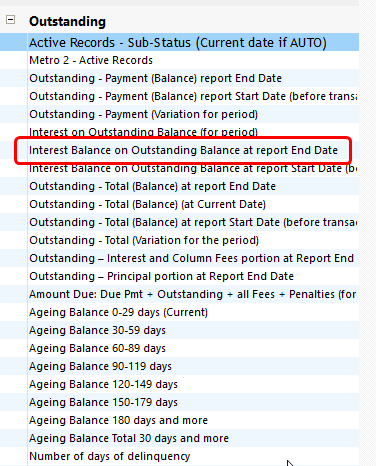Supreme Court of Canada considers litigation funding for the first time
Canada’s highest court will soon have an opportunity to clarify the law on litigation funding. Find out more by following this link.
Canada’s highest court will soon have an opportunity to clarify the law on litigation funding. Find out more by following this link.
Margill Loan Manager latest version 4.4 and upcoming version 5.0 – Release notes (new features) now available on our web site.
Q: How can I enter multiple payments and advances in a loan without having to enter them one by one? I have over 100 in one loan. I have the data in Excel.
A: Very easily, in seconds with a simple 4-column Excel sheet.
Go to Tools > Post Payments. On the top of the window, far right, you will see the “Bulk Payment Import” button. Of the two options, choose “Import new payments” (payments can be actual paid payments, upcoming payments, advances (additional principal), etc.)
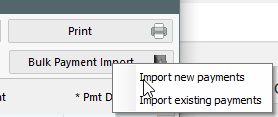
The window will then show you the required Excel file format with the 3 required data columns and others that are optional:
You can add additional information such as a line comment, a check number, other data, even that the payment should be a fixed principal payment (see the ?).
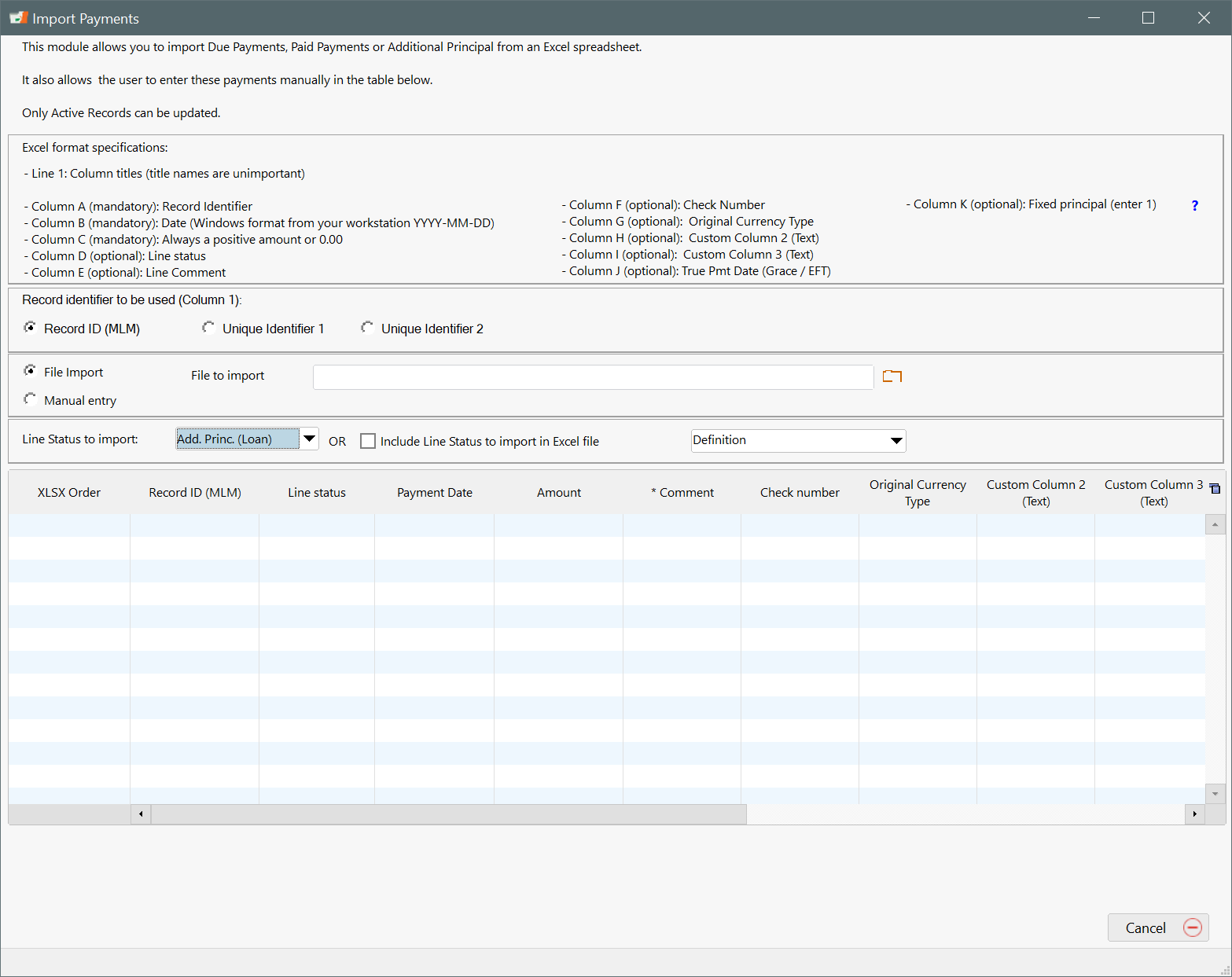
For Column D of the Excel file, you would specify what the amount is:
A Paid Payment would be a 4 in column D, and an advance would be a 14. If an amount is due but not yet paid, then this would be a 1 (so something in the future, not in the past).
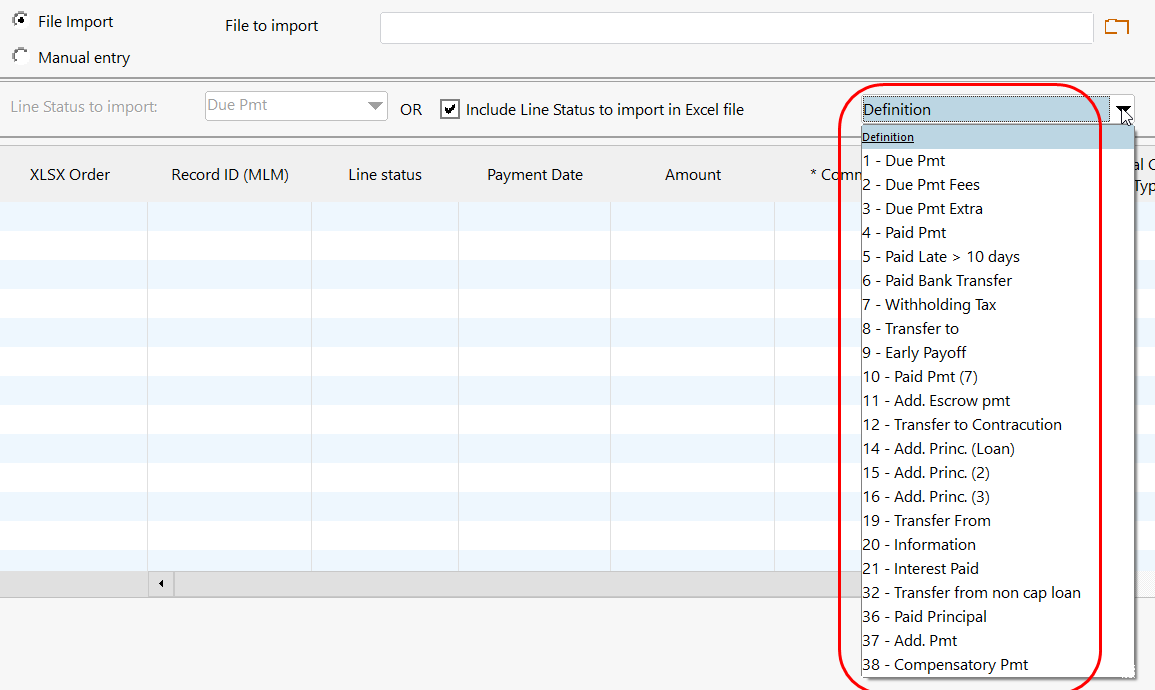
Here is a sample Excel sheet with 2 advances (12,000 and 15,000), 5 Paid payments and 10 Due payments in the future:
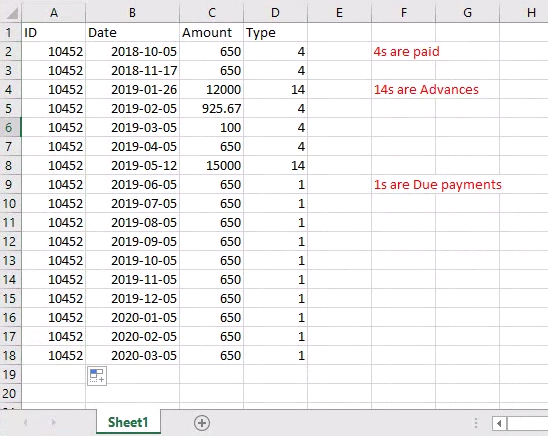
The result is all good since no errors are shown. Errors would be shown in red with descriptions of whey they are in error (wrong dates, illogical scenarios, loan is not Active, etc.): To import press on “Insert lines”:
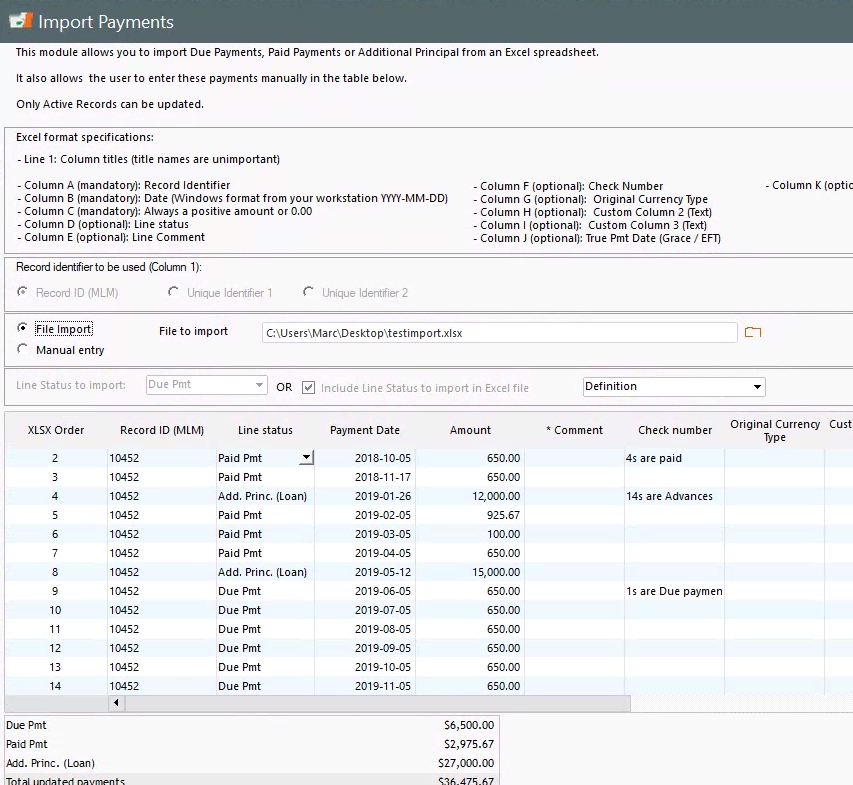
See also: Importing batch payments in Margill Loan Manager (CSV, Excel)
Q: Can Margill software be used for HOA (Home Owners Association) collections along with the interest calculation?
A: Yes, very easily without needing an agency to do these calculations.
Many law firms and accountants are tasked with collecting HOA assessments and find it time consuming with a risk or error when this is done by hand or in a spreadsheet.
Option 1 – Low volume
Margill Law Interest Calculator can be used to do these calculations when there is a low volume (less than 20-25). You can even import the assessment amounts and dates as well as the payments made with a very simple 2-3 column Excel sheet.
Example of a HOA collection table where assessments are included as well as payments and attorney fees:
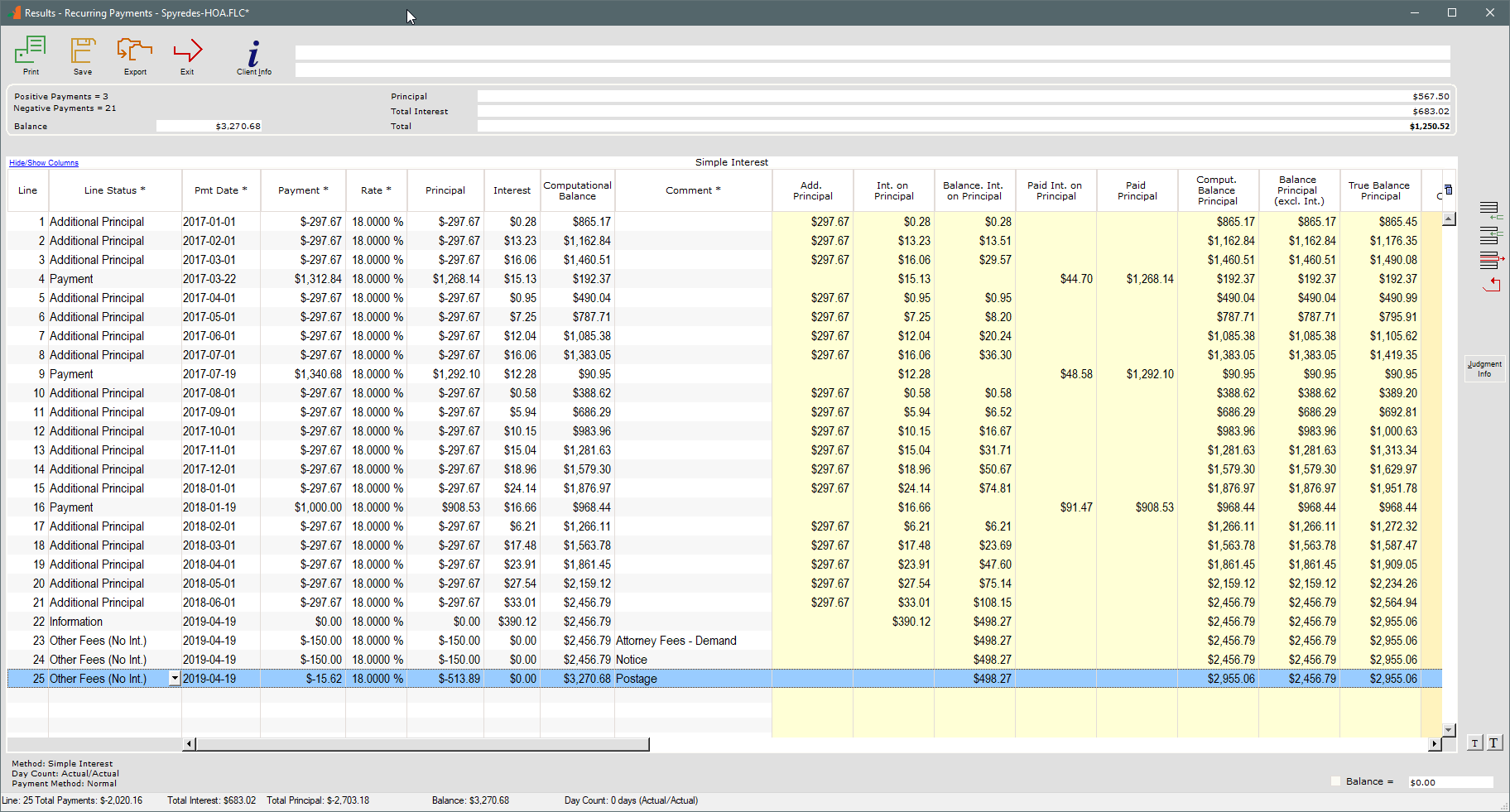
Nice need reports can also be produced in PDF formats that show how payments are applied.
Option 2 – Higher volume
If your volume if greater than twenty or so cases (and can go to the hundreds or thousands), then Margill Loan Manager would be a better solution since all data is stored in a nice-neat database in which assessments, payments, attorney fees and costs can be added in bulk though a spreadsheet. You can also manage payments and collect through ACH payments – so you can actually service the HOA assessments. Furthermore, you can instantly provide your client with balances for all outstanding assessments.
For more information, please contact us at 1-877-683-1815 or by email [email protected]
Margill Automatic Emails…
Loan servicing made easy
Completely adapt a payment schedule to your borrower’s needs and real life such as irregular payments, seasonal cashflow, interest-only, principal-only, partial, late, unpaid payments, lump sum, automatic fees, negative balances in intercompany loans, interest rate changes, residual value…
Effective for accounting periods starting January 1, 2019, International Financial Reporting Standards 16 (IFRS 16) has replaced International Accounting Standards 17 (IAS 17) as the accounting standard for leases for all Canadian entities reporting under IFRS.
About 12 million Americans use high or very high interest loans every year (payday, title loans, etc.). The Trum administration may introduce new legislation that may significantly change the landscape. Here is an interesting article dealing with the subject.
Question:
I have a question regarding interest accruing on unpaid payments. We have a franchise that is working on their cash flow right now and we wanted to give them an updated statement on what is owed to us for their franchise loan. How can I see interest that accrued on unpaid payments? So for example if their payment was due back in March of last year and they want to make a payment. How can I show them the interest that accrued on that payment?
Answer:
This is found in the “Outstanding” columns:

The interest is a very close approximation since uses a slightly different way of calculating interest than the normal method (really not a big difference, so no need to worry about this).
In the reports see under the Outstanding theme:
